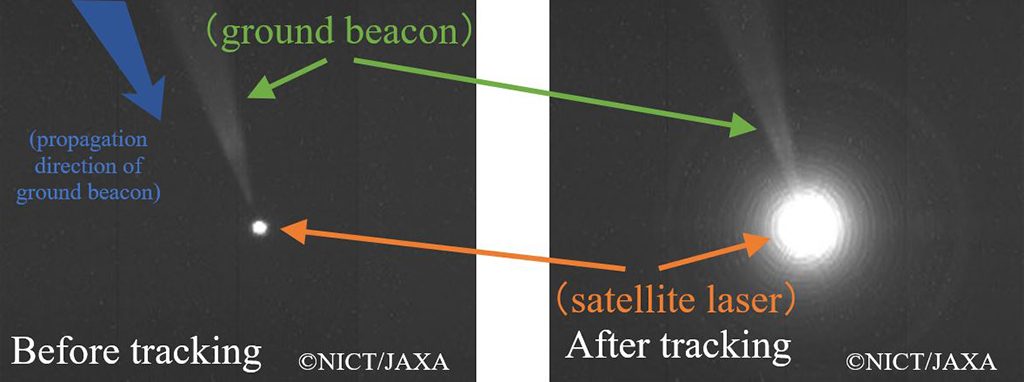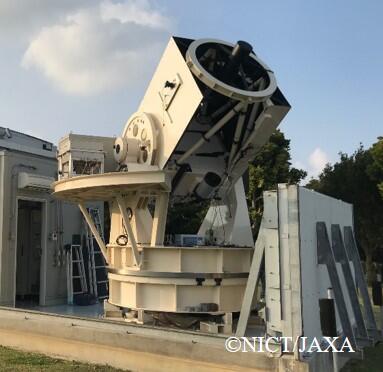Successful Laser Acquisition and Tracking between Optical Data Relay Satellite and Optical Ground Station
February 17, 2021 (JST)
National Research & Development Agency
Japan Aerospace Exploration Agency (JAXA)
National Institute of Information and Communications Technology (NICT)
The Japan Aerospace Exploration Agency (JAXA) and the National Institute of Information and Communications Technology (NICT) confirmed that a bidirectional optical link was established between the laser-communication terminal for inter-satellite optical communications (Laser Utilizing Communication System: LUCAS*) aboard the Optical Data Relay Satellite (Fig. 1), which was launched by the H-IIA F-43 rocket from the Tanegashima Space Center on November 29th, 2020, and the optical ground station at the Okinawa Electromagnetic Technology Center of NICT (Fig. 2).
Having jointly conducted the function and performance evaluation work called the checkout using the NICT’s optical ground station since Jan. 27th, 2021, JAXA and NICT succeeded in the acquisition and tracking of optical signals from the laser-communication terminal approximately 40,000 km away (Fig.3).
Results of the checkout validated that the system has the capability to acquire and track optical signals transmitted from a satellite and an optical ground station alternately given that the optical ground station is regarded as a laser-communication terminal implemented in an actual LEO (Low Earth Orbit) satellite such as ALOS-3. The evaluation results showed that the function of acquisition and tracking using light of a wavelength of 1.5 μm, one of the key technologies of LUCAS, performed in orbit as expected.
In this collaborative work, JAXA was in charge of the development and operation of LUCAS (including the checkout equipment installed at the NICT’s optical ground station), operation of the satellite, and the performance evaluation. NICT provided its knowledge in optical communication, prepared and operated the optical ground station for the acquisition-and-tracking experiments, and in addition gave support for the performance evaluation in the experiments under atmospheric-turbulence effects.
Further updates on LUCAS will be posted on the JAXA website:
http://www.satnavi.jaxa.jp/project/lucas/
*LUCAS means “Laser Utilizing CommunicAtion System,” which consists of the laser-communication terminal onboard the Optical Data Relay Satellite, the laser-communication terminal onboard the Advanced Land Observing Satellite "DAICHI-3" (ALOS-3), and the optical ground system.

Figure 3. Infrared images before and after the establishment of capture/tracking. Changes in the received laser signal from the optical data relay satellite before and after the establishment of acquisition/tracking captured by the NICT’s infrared camera on the optical ground station side. Since the signal light cannot be detected with the naked eye, it was imaged with an infrared camera. After the tracking is established, it can be seen that the satellite laser is accurately directed to the optical ground station, and the intensity of the received light is increased.

